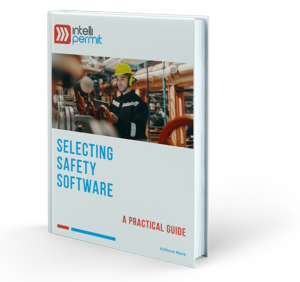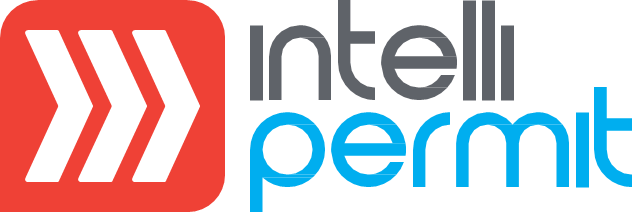Improve Safety by Targeting Wasteful Permit and Isolation Processes
All too often the permit and isolations processes required for maintenance activities are regarded as wasteful expenditure of time and resources.
In some cases, this attitude stems from a legislative compliance focus. “We need to get our plant up and running as soon as possible, and regulations compel us to fill in these forms and get them signed by this manager, and then counter-signed by that specialist who is never in his office…”The bureaucracy gets in the way of our understanding of the true value being sought.
If, however we express the value required from the permit to work process as “ensure the safety of all personnel involved in maintenance activities”, we can apply value stream mapping techniques to identify inefficiency and disorganization throughout the workflow. Removing steps in the process that fail to add value is a method proven over decades in a range of settings. Let’s take a brief tour of some of the classic wastes associated with permit and isolation processes.
Waiting
Frequently, permit to work systems are not designed to actively facilitate visibility of work in progress. Information is dispersed across multiple permit books, or limited to inaccessible permit issue offices. This means that dependencies between tasks are not clear, and neither is the potential to introduce additional hazards through unplanned work group interactions.
A lack of visibility on the current state of permits increases the risk of isolation officers being unprepared for isolation requests and contractors having to wait for sections of plant to be made safe.
Defects and over-processing
It is important that organisations understand the waste associated with isolation requests that are not accurate. Obviously, it is critical that all sources of potential energy are isolated and locked out – after all this is the purpose of the process! However, there is significant cost in including unnecessary isolation points: consider the steps required to identify, isolate, lock and tag, test for dead, de-isolate and check the running state of each isolation point. Ultimately, the wasted effort impacts on safety with a greater propensity for personnel to rush through long lists of redundant isolations.
Ideally, these scenarios are best engineered out of the system with well-designed process/covering isolations. Additionally, standardisation of task and job-specific isolation procedures ensures that the correct isolations are identified for implementation.
Similarly, many of the forms that we require personnel to complete are rife with information that is not relevant to the task at hand. The requirement for auditable permit documentation means that each element needs to be checked or scored out. Static forms waste time and frustrate people who are trying to focus on getting a job done safely.
Over-production and Excess Inventory
Permit and isolation is integral to shutdown planning. Maintenance shutdowns are massively expensive exercises typically incurring large contractor and material bills and well as the opportunity cost of lost production. Failing to prepare the permit and isolations for a shutdown job, or doing so for tasks that don’t get performed in the shutdown window is a major waste. Preparing for jobs that don’t get done can be thought of as building work-in-progress inventory whose value is immediately written off at the end of the shutdown. Not only is time squandered on the task not performed, but scarce skills are diluted from the critical tasks that are finally performed.
It is important for the performance of the permit and isolation processes to be reviewed in detail following a shutdown to identify waste and for this learning to be built into future plans.
Transportation
Manually transcribing permits into consolidated registers, copying isolation information from isolation procedures to lockbox permits, and replication of work order information on the permit forms and multiple certificates are all forms of “transport waste”. Each manual step in the process of moving or copying data wastes time and elevates the risk of defects.
Adapt IT’s IntelliPERMIT facilitates continuous improvement
Building permit and isolation systems around IntelliPERMIT, organisations are able to significantly reduce waste from the permit and isolation processes. Permits are streamlined to include only the relevant hazards and controls – reducing the scope for defects and focusing personnel on the information relevant to the task at hand. By collating the previously disparate permits and certificates into a single work pack, authority is correctly delegated and waiting time is reduced.This hazard-centric approach similarly ensures that processes only include the certificates and controls required for the particular task under consideration. Should either the content of the permit forms, or the workflow process require modification, these improvements can be rapidly implemented while retaining the appropriate controls.
The metrics provided by the system on preparation, waiting and tool time are a valuable planning resource for future shutdowns. Measuring the velocity of permit processing and time to isolate equipment on the critical path of a shutdown means that the performance benchmarks can be established.
By building more responsive and relevant processes, we increase engagement of personnel as they can more clearly see how each step in the process contributes towards a shared value: the safety of themselves and their colleagues. Eliminating waste allows the participants to understand their role in the process and to concentrate on their primary objectives. Finally, the safety systems we implement need to encourage improved communication between the people, rather than a narrow focus on compliance.
Article by Scott Bredin
Free Guide - Selecting Safety Software

Learn why safety management software is necessary to support a modern industrial operation, the different types of software applications, and helpful, practical advice on how to undertake a safety software selection process in your own company.
Get started today, download your guide and take the next step towards world-class safety management.
Having IntelliPERMIT in place is an ideal opportunity to optimize processes and adopt a lean approach.
IntelliPERMIT increases visibility of work in progress and this increased transparency improves safety while at the same time improving productivity, reducing waste and improving the integrity of the safety process overall.

Continue Reading
Q&A with IntelliPERMIT Consultant Lungelo Majozi
Explore the advantages of electronic permit to work (e-PTW) systems over paper methods, from faster investigations to specific hazard management. Learn how e-PTW enhances safety, prevents redundant isolations, and ensures accountability. Discover future trends like 3D modeling. IntelliPERMIT automates tasks, improves communication, and reduces costs, making workplaces safer and more efficient.
Powering Safety Innovations: An Exclusive Q&A with IntelliPERMIT Consultant Shirley Breytenbach
IntelliPERMIT transforms permit management with streamlined processes, competency-based approvals, and real-time visibility. Ensure regulatory compliance, enhance worker safety, and boost operational efficiency. The system offers seamless integration, empowering organisations to proactively mitigate safety risks.
Safety Software Implementation Success : An Exclusive Q&A with IntelliPERMIT Consultant Henry Boshoff
Unlock safety software success with IntelliPERMIT: Prioritise key features, secure user buy-in through change management, and foster collaboration. Set measurable goals, leverage incident data for proactive decisions, and ensure intuitive search capabilities. Streamline report generation and simplify scheduling and management of training, drills, toolbox talks, and audits. Overcome adoption challenges by addressing pain points and customizing the software. Enhance user adoption with automation and user-friendly interfaces. Evaluate safety software providers based on knowledge, experience, and adherence to standards—IntelliPERMIT excels. Easily integrate with existing systems through standard APIs. Opt for web-based software for accessibility and usability. IntelliPERMIT enhances safety practices and compliance.



